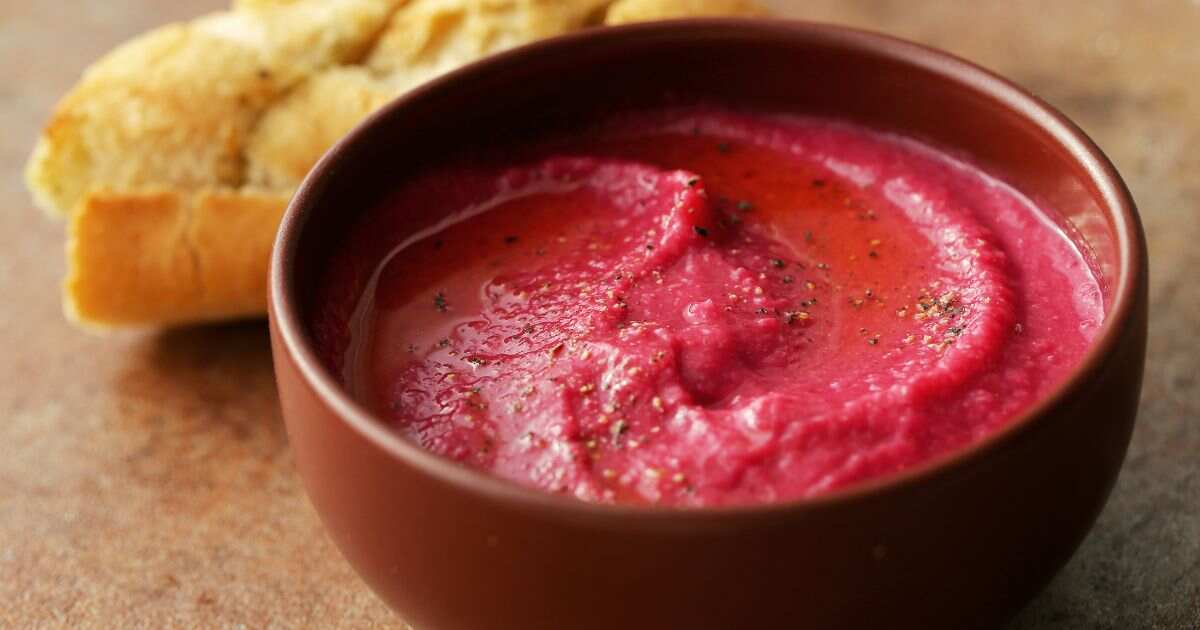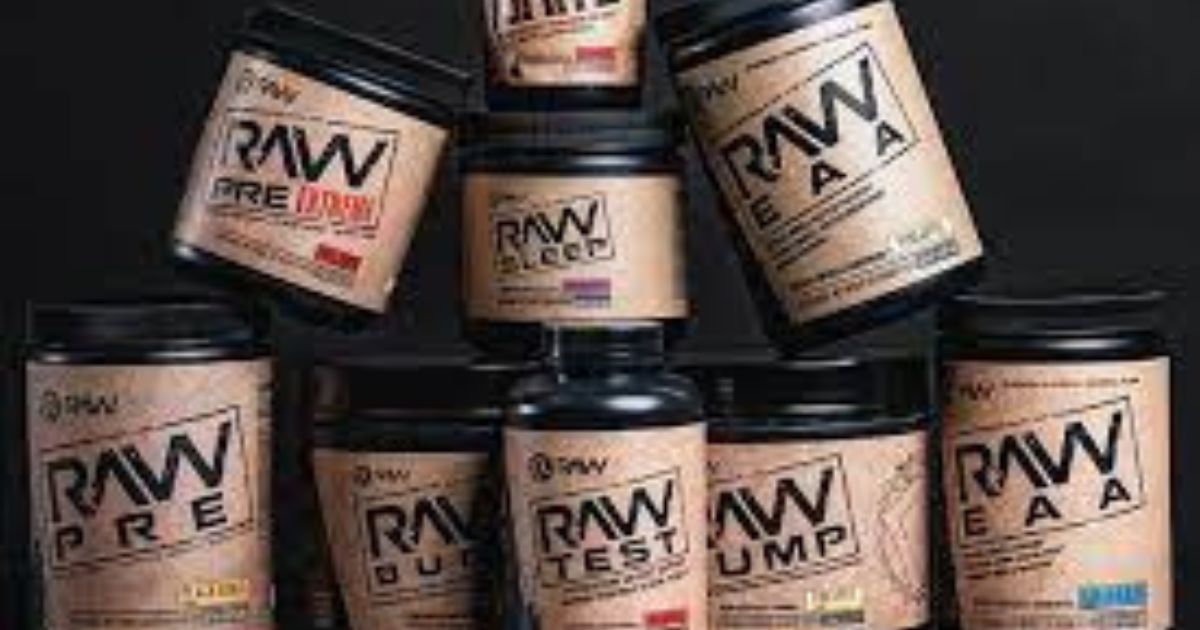Pink sauce nutrition label: pink sauce is a mayonnaise-based sauce that contains calories, fat, sodium, and sugar. Pink sauce, or salsa rosa, is a popular condiment in many countries.
While it may add flavor to your meal, it is important to pay attention to its nutrition label. A typical pink sauce contains mayonnaise, ketchup, and sometimes chili sauce or paprika. As such, it may contain a considerable amount of calories and fat.
It is also high in sodium and sugar, depending on the brand. Therefore, it is recommended to consume it in moderation and opt for low-fat or sugar-free versions whenever possible. In this article, we will take a closer look at the nutrition label of pink sauce and how it may affect your health.

What Is In Pink Sauce Nutrition Label ?
Pink sauce is a versatile condiment that has become increasingly popular in recent years. It can be used as a dressing, dip, or marinade, and its delicious flavor and vibrant color make it a favorite among many foodies. But what exactly is in pink sauce?
In this section of the blog post, we will explore the ingredients of pink sauce and how it is made. We will also compare homemade pink sauce to store-bought versions.
Ingredients Of Pink Sauce Nutrition Label
Pink sauce nutrition is typically made with a combination of mayonnaise and ketchup, with additional ingredients for flavor. The following are common ingredients found in pink sauce:
- Mayonnaise
- Ketchup
- Garlic powder
- Paprika
- Lemon juice
- Worcestershire sauce
- Salt and pepper
How Pink Sauce Nutrition Label Is Made
Pink sauce is relatively easy to make and requires only a few ingredients. Here’s a simple recipe for making pink sauce at home:
- In a small bowl, mix 1/2 cup of mayonnaise and 1/4 cup of ketchup until well combined.
- Add 1/2 teaspoon of garlic powder, 1/2 teaspoon of paprika, 1 teaspoon of lemon juice, and 1 teaspoon of worcestershire sauce.
- Season with salt and pepper to taste.
- Mix all ingredients until well combined.
- Refrigerate for at least 30 minutes before serving.
Comparison Of Homemade Vs. Store-Bought Pink Sauce Nutrition
While store-bought pink sauce is convenient and readily available, there are some benefits to making it at home. Here are some differences between homemade and store-bought pink sauce:
Homemade pink sauce:
- Allows for customization of ingredients based on taste preferences
- Freshness does not expire as opposed to store-bought pink sauce
- Healthier because there are no preservatives
- Cost-effective in the long run
Store-bought pink sauce:
- Convenient
- Ready to use
- Long-lasting
Pink sauce nutrition is a popular condiment that can be easily made at home with a few simple ingredients. Each person can customize their sauce based on personal preference and dietary restrictions. Homemade pink sauce is fresher, cost-effective, customizable, and healthier, while store-bought pink sauce is convenient, ready to use, and long-lasting.
What Are The Health Benefits Of Pink Sauce Nutrition Label?
Pink Sauce Nutrition Lebel Value Of Pink Sauce Nutrition.
Pink sauce, also known as cocktail sauce, is a popular condiment made from a blend of ketchup and mayonnaise. It’s commonly found in seafood restaurants and salad bars. Here are the key nutritional facts about pink sauce:
- One tablespoon of pink sauce contains approximately 50 calories.
- It contains 4 grams of fat, of which 1 gram is saturated fat.
- Pink sauce has 150 milligrams of sodium, which is quite high.
- It also contains small amounts of vitamin a and vitamin c.
Health Benefits Of Pink Sauce Nutrition Lebel Ingredients
Pink sauce is made from two main ingredients – ketchup and mayonnaise. Let’s take a look at the nutritional benefits of these ingredients:
Ketchup
- It contains lycopene, a powerful antioxidant that may help prevent cancer and heart disease.
- Ketchup is low in calories, with just 15 calories per tablespoon.
- It also contains small amounts of vitamins a and c.
Mayonnaise
- Mayonnaise is a source of healthy fats, particularly monounsaturated and polyunsaturated fats.
- It also contains vitamin e, a powerful antioxidant that helps protect cells from damage.
- However, mayonnaise is high in calories and should be consumed in moderation.
How Pink Sauce Nutrition Can Promote A Healthy Diet
While pink sauce is not particularly nutritious, it can be included as part of a healthy diet in moderation. Here are some ways pink sauce can promote a healthy diet:
- It can add flavor to otherwise bland dishes, making vegetables and salads more enticing.
- Pink sauce can be used as a dipping sauce for seafood, such as shrimp or crab, which are excellent sources of protein and omega-3 fatty acids.
- However, it should be used sparingly due to its high sodium and calorie content, and those watching their weight or sodium intake may want to opt for a different condiment.
While pink sauce is not a superfood, its key ingredients, ketchup and mayonnaise, offer some nutritional benefits. Used in moderation, pink sauce can be a tasty addition to a healthy diet.
Are There Any Risks Or Side Effects To Pink Sauce Nutrition Label ?
Pink Sauce Nutrition Label is a delicious and versatile condiment that can be used in various dishes, but you may be wondering if consuming it carries any risks or side effects. In this section, we’ll explore the potential health risks associated with pink sauce, the common side effects you may experience and how to avoid them.
Potential Health Risks Associated With Consuming Pink Sauce
While consuming pink sauce in moderation is generally safe for most people, there are a few potential health risks to be aware of:
- High in sodium: Pink sauce usually contains high amounts of sodium, which can increase blood pressure levels and the risk of heart disease in some individuals.
- Allergies: Some ingredients in pink sauce, such as dairy products, may cause allergic reactions in some people. It’s essential to read the ingredients list and consult with a doctor if you have any food allergies or intolerances.
- Unverified claims: Some manufacturers may include unverified or untrue claims on their packaging or product description. Always read the labels and research the product before purchasing or consuming it.
Common Side Effects Of Pink Sauce Nutrition Label
If you consume pink sauce, you may experience some common side effects, such as:
- Heartburn: Pink sauce contains tomato sauce, which may cause heartburn in some people.
- Upset stomach: Overconsumption or consuming contaminated pink sauce can lead to stomach upset or food poisoning.
- High blood pressure: As mentioned, pink sauce contains high levels of sodium, which can increase blood pressure levels in some individuals.
How To Avoid Potential Dangers Of Pink Sauce Nutrition Label
Here are some tips on how to enjoy pink sauce safely:
- Read the ingredients list: Check the ingredients list and avoid purchasing or consuming pink sauce that contains any allergens or ingredients you’re intolerant to.
- Moderation is key: Consume pink sauce in moderation to avoid the risk of high blood pressure and other health issues.
- Store safely: Store pink sauce in a cool and dry place to prevent spoilage or contamination.
- Choose a reputable brand: Research the brand and look for reputable manufacturers that have verified and accurate claims.
Consuming pink sauce in moderation is generally safe, but there are some potential risks and side effects to be aware of. Always read the labels, research the product and consult with a doctor if you have any concerns or allergies.
Enjoy pink sauce safely and add a delicious flavor to your meals!
How To Incorporate Pink Sauce Nutrition Label Into Your Diet
Pink sauce, also known as salsa rosa or sauce rose, is a versatile condiment that can add flavor to any dish. Instead of reaching for ketchup or mayo, try incorporating pink sauce into your meals. Here are a few ways:
Recipes Featuring Pink Sauce Nutrition Label As A Key Ingredient
- Pink sauce pasta: Cook pasta, and mix it with a combination of pink sauce and tomato sauce, and add sautéed vegetables or grilled chicken.
- Pink sauce pizza: Spread pink sauce over your pizza crust, add your favorite toppings, and bake for a delicious and unique twist.
- Pink sauce tacos: Layer pink sauce over your tacos, along with seasoned ground beef or grilled chicken, lettuce, and shredded cheese.
How To Use Pink Sauce Nutrition Label As A Healthy Condiment
Pink sauce is a healthy condiment option as it is often made with yogurt or light mayo instead of full-fat ingredients. Here are some ways to use it:
- As a salad dressing: Mix pink sauce with balsamic vinegar or olive oil for a creamy and tangy salad dressing.
- As a marinade: Marinate chicken, fish, or tofu in pink sauce before grilling or baking for added flavor.
- As a dip: Use pink sauce as a dip for veggies or baked sweet potato fries instead of high-calorie ranch or ketchup.
Suggestions For Incorporating Pink Sauce Nutrition Label Into Your Meal Planning
- Meal prep: Make a batch of pink sauce and store it in the fridge to use throughout the week in various dishes.
- Pair with protein: Whether you prefer chicken, fish, tofu, or beans, add pink sauce on top for a tasty and healthy protein-packed meal.
- Use it as a condiment: Sub out mayo or ketchup for pink sauce on sandwiches or burgers for a healthier alternative.
Incorporating pink sauce into your meals is an easy and delicious way to add flavor and variety to your diet. Give it a try and see how it can transform your dishes!
Frequently Asked Questions On Pink Sauce Nutrition Label
What Is Pink Sauce Nutrition Label ?
ThePink Sauce Nutrition Label is a creamy tomato-based sauce that is used as a condiment for italian dishes. It is a popular sauce that contains mayonnaise, tomato sauce, and various seasoning herbs.
What Are The Nutrients In Pink Sauce Nutrition Label ?
Pink sauce, although creamy, is not loaded with fatty ingredients. It is a low-calorie sauce that provides nutrients such as vitamin c, vitamin a, and iron. Its nutrition facts may vary depending on the brand.
Is Pink Sauce Gluten-Free?
Not all pink sauces are gluten-free as some brands may contain wheat ingredients, but it is possible to find a gluten-free option. If you have celiac disease or gluten sensitivity, it’s important to read the nutrition label to check for any gluten-containing ingredients.
How Many Calories Does Pink Sauce Nutrition Label Contain?
The calorie count of pink sauce varies by brand, but on average, 1 serving of 2 tablespoons contains around 50 calories. It is important to note that the addition of pasta or other ingredients will increase the calorie count of the overall dish.
Is Pink Sauce Nutrition Label Vegan?
Pink sauce is not suitable for vegans as it contains mayonnaise which is made with eggs. However, some brands may offer a vegan alternative. It’s important to check the label for plant-based ingredients.
Conclusion
As we have seen from the nutrition label of pink sauce, it contains a moderate amount of calories and sodium, making it a decent option for those looking to watch their intake of those two nutrients. The ingredient list is also relatively short and simple, which can give consumers peace of mind when it comes to what they are consuming.
However, it is important to note that the sugar content is quite high, so individuals who are monitoring their sugar intake may want to consider using pink sauce in moderation. Overall, pink sauce can be a tasty addition to meals, but it’s always important to be aware of what’s in your food and how much you’re consuming.
By reading and understanding nutrition labels, we can make informed choices about the foods we eat and how they fit into our overall dietary needs and goals.




